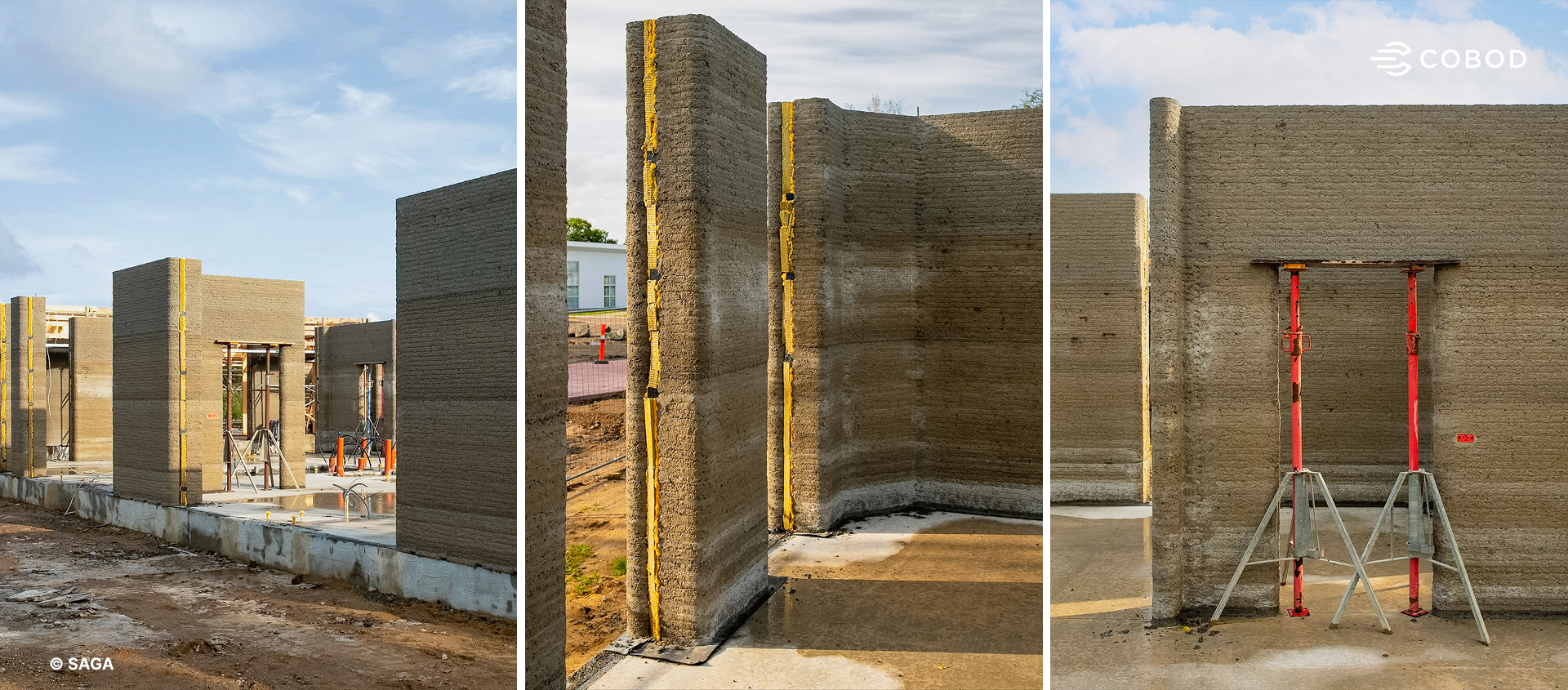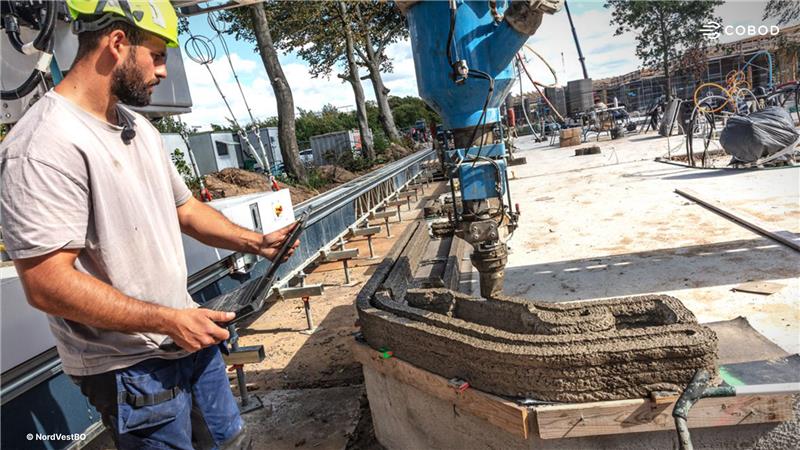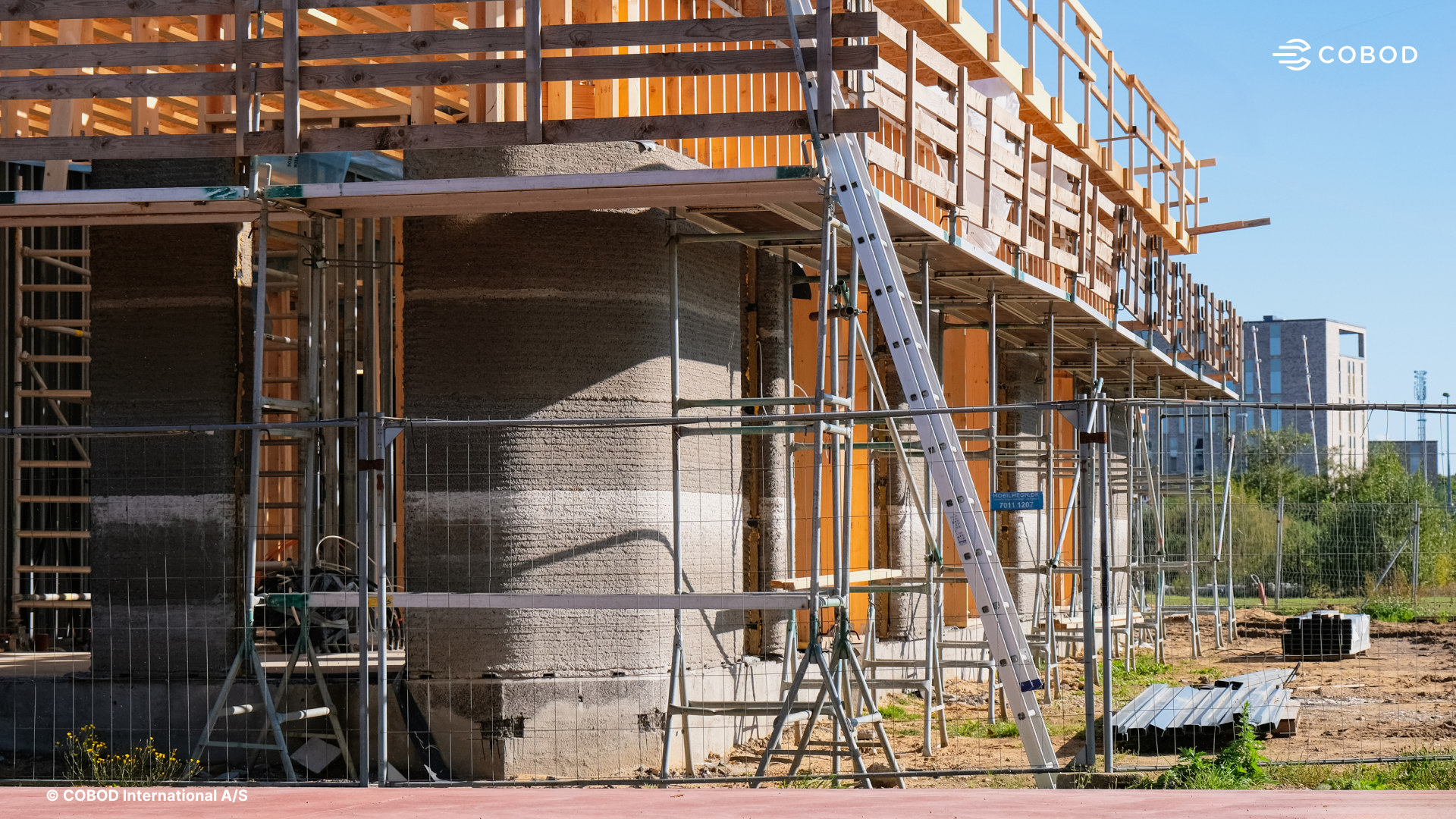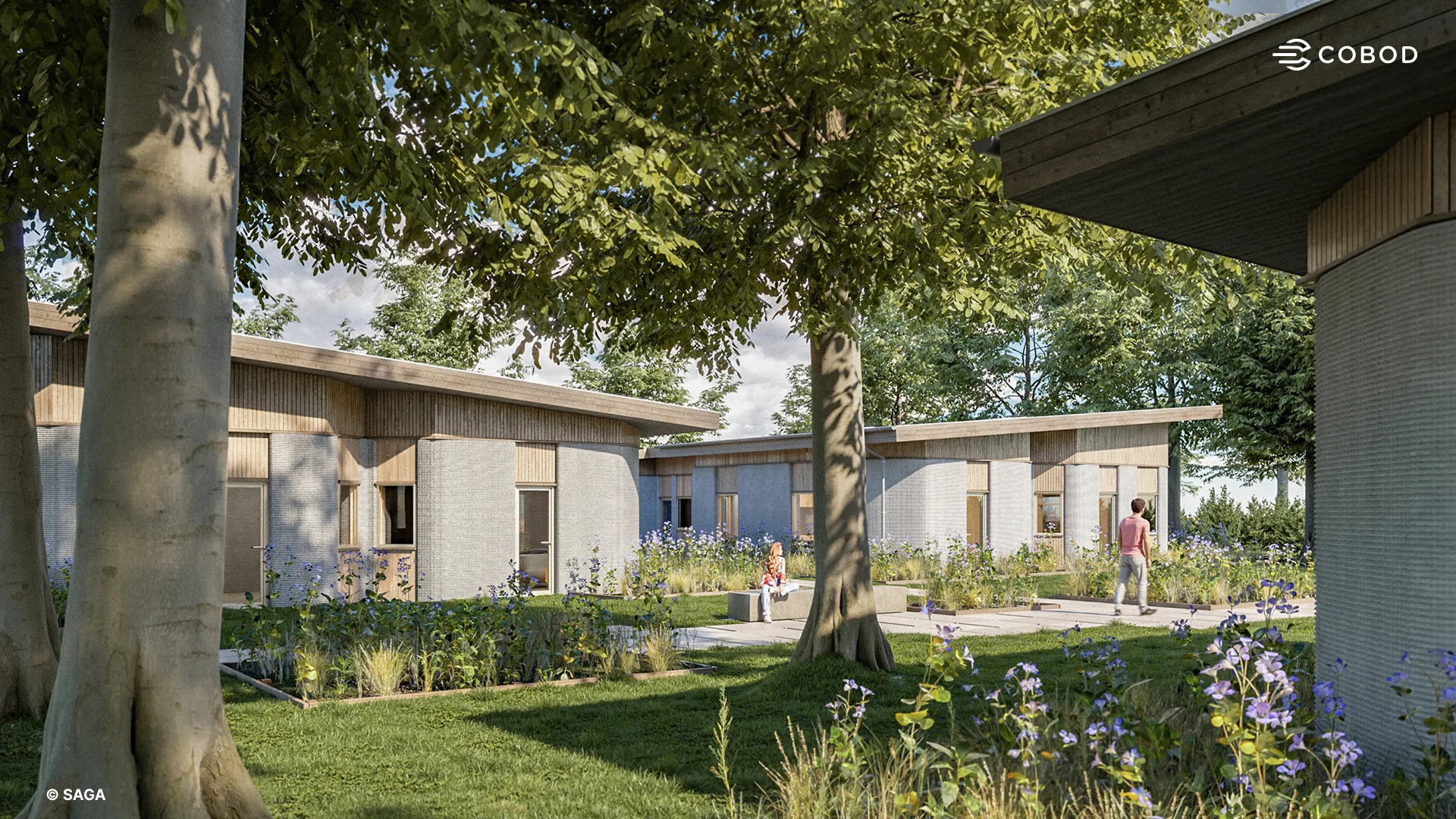Denmark, October 2025 – 3DCP Group has completed the 3D printing phase of Europe’s largest 3D printed housing project, producing 36 student apartments in Holstebro with COBOD’s BOD3 3D Construction Printer for NordVestBo. The project demonstrates how 3D construction printing can deliver multiple housing units with higher productivity, speed, and sustainability compared to conventional construction methods.
- 36 student apartments printed for NordVestBO in Holstebro, an affordable housing organization in Western Denmark
- Total printed area: 1,654 m² (17,804 sq.ft.) across six buildings
- Each building includes six student apartments ranging from 40–50 m² (431 – 538 sq.ft.)
- Printing time reduced from several weeks on the first building of 6 apartments to just five days on the last, equal to more than one apartment per day.
This 3D construction printing project is demonstrating the potential to build faster, more efficiently, and at scale. Skovsporet (“The Forest Trail”) brings this vision to life as Europe’s largest 3D printed housing project. Located near VIA University College’s Holstebro campus, the development features six buildings, each containing six student apartments that together form a connected 3D printed student house community.

Using the COBOD BOD3 3D Construction Printer, 3DCP Group printed 36 apartments ranging from 40 to 50 m² (431–538 sq.ft.), totaling 1,654 m² (17,804 sq.ft.), a clear demonstration of how 3D construction printing can efficiently deliver multi-unit housing faster, more sustainably, and with greater design flexibility.
By automating precision and speed, 3D construction printing enables faster and more accurate building processes. At Skovsporet, 3DCP Group used the COBOD BOD3 printer to achieve millimeter accuracy across all printed walls, operated by a 3-person team. The BOD3’s ground-based track system, specifically designed for residential construction, allowed the printer to extend easily along the Y-axis, enabling uninterrupted printing of long wall sections.

Over the course of the project, printing productivity increased significantly. The first 6 units apartment building required several weeks to complete, while the final one was finished in only five days. This productivity gain demonstrates how 3D construction printing can scale efficiently, producing multiple housing units with consistent quality, lower labor requirements, and optimized project timelines.

Beyond productivity, the project also demonstrates how 3D printing supports sustainability both in material use and environmental integration. At Skovsporet, the 3D printed walls were made using D.fab concrete with FUTURECEM, a low-carbon cement developed by Aalborg Portland. Because the printing process deposits material only where it is structurally required, waste generation is significantly lower than in conventional construction. The project was also designed to respect its natural surroundings, with print beds carefully positioned between existing trees to preserve 95% of the site’s trees, a clear demonstration that advanced construction methods and sustainable design can coexist.
At Skovsporet, 3D construction printing expands architectural possibilities, creating homes that are both functional and inspiring. Designed by SAGA Architects, the project shows how 3D printing can be combined with traditional materials to create modern, practical spaces. The 3D printed walls form the foundation of the student apartments, each including a kitchen, study area, lounge, bathroom, and double bed.

Large roof windows and slanted ceilings fill the units with natural light, creating open, inviting spaces. The six buildings are arranged around shared courtyards to encourage community living, while the use of coated plywood and glass complements the printed concrete to give each apartment a warm and distinct character. Beyond the homes, landscaped gardens, walking paths, and bicycle parking enhance the sense of community, making Skovsporet an example of how 3D printed construction combines flexibility, functionality, and livability.

Henrik Lund-Nielsen, Founder and General Manager of COBOD International, said:
“The results at Skovsporet show how 3D construction printing can deliver large-scale projects faster and more efficiently than ever before. With the BOD3 printer, we achieved continuous improvements in productivity from one building to the next, confirming that the technology is ready for multi-unit residential developments. This project is a strong example of how automation impacts the speed of construction.”
Mikkel Brich, Co-Founder of 3DCP Group, added:
“Skovsporet proved that 3D construction printing can meet the strict requirements of subsidized housing while delivering high precision and productivity. As we deepened our understanding of the technology, we increased productivity from one building to the next, and are confident we can build even faster in future projects.“
With the 3D printing phase now complete, Skovsporet moves toward interior construction. When finished, the project will provide 36 affordable, high-quality student apartments. The Holstebro project confirms that 3D construction printing continues to meet modern housing needs at scale, and with proven speed, precision, and productivity, COBOD’s BOD3 technology is redefining how homes are built.
RELEVANT LINKS
- Learn more about the Printing Process: On-site in Holstebro
- COBOD International: World leader in 3D construction printing | COBOD
ABOUT COBOD
COBOD International stands as the global leader in supplying 3D printers for the construction sector, with over 85 printers distributed across North and Latin America, Europe, the Middle East, Africa, and Asia-Pacific. Driven by a vision to build smarter through multifunctional construction robots based on 3D printing, COBOD envisions automating half of the construction processes to achieve faster, cost-effective, sustainable results with enhanced design versatility.
From residential, commercial, and public buildings, COBOD’s 3D printers have been instrumental in erecting 1- to 3-story structures across all six inhabited continents. The innovative technology also extends to fabricate large-scale data centers, wind turbine towers, tanks, and more.
Embracing an open-source material approach, COBOD collaborates with global partners, including customers, academia, and suppliers. The company, backed by prominent shareholders such as General Electric, CEMEX, Holcim, and PERI, operates from its main office in Copenhagen, Denmark, and regional locations in Miami, Florida, and Kuala Lumpur, Malaysia. COBOD’s dynamic team comprises over 100 professionals from 25 diverse nationalities.
ABOUT 3DCP GROUP
3DCP Group consists of an engineering company, architecture firm, and the constructing party, which combined possess all the skills necessary to 3D print a complete building. This gives 3DCP a unique opportunity to take care of the entire construction process, from idea to turn-key product.
3DCP’s ambition is to build better, cheaper, and more sustainably.
When the company says its ambition is to build better, it doesn’t just mean the objective quality of the house, but also the subjective experience of the house, all of which is made possible through the construction method and the surrounding processes.
ABOUT NORDVESTBO
NordVestBO is a public housing association based in Holstebro and Struer. With 60 dedicated employees, we manage more than 3,300 homes, family, student, and senior housing, including both apartments and townhouses, across 43 departments in the area. In addition, we handle the administration of several private cooperative and owner-occupied housing associations.
We take pride in building, renovating, and renting out attractive homes, ensuring that our properties are always well maintained. At NordVestBO, service is our top priority, and we create homes for everyone.
